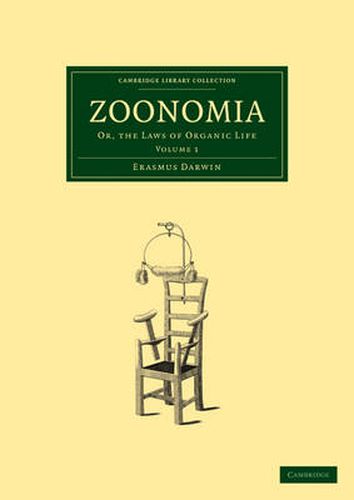Readings Newsletter
Become a Readings Member to make your shopping experience even easier.
Sign in or sign up for free!
You’re not far away from qualifying for FREE standard shipping within Australia
You’ve qualified for FREE standard shipping within Australia
The cart is loading…






Erasmus Darwin (1731-1802) is remembered not only as the grandfather of Charles but as a pioneering scientist in his own right. A friend and correspondent of Josiah Wedgwood, Joseph Priestley and Matthew Boulton, he practised medicine in Lichfield, but also wrote prolifically on scientific subjects. He organised the translation of Linnaeus from Latin into English prose, coining many plant names in the process, and also wrote a version in verse, The Loves of Plants. The aim of his Zoonomia, published in two volumes (1794-6), is to ‘reduce the facts belonging to animal life into classes, orders, genera, and species; and by comparing them with each other, to unravel the theory of diseases’. The first volume describes human physiology, especially importance of motion, both voluntary and involuntary; the second is a detailed description of the symptoms of, the and the cures for, diseases, categorised according to his physiological classes.
$9.00 standard shipping within Australia
FREE standard shipping within Australia for orders over $100.00
Express & International shipping calculated at checkout
Erasmus Darwin (1731-1802) is remembered not only as the grandfather of Charles but as a pioneering scientist in his own right. A friend and correspondent of Josiah Wedgwood, Joseph Priestley and Matthew Boulton, he practised medicine in Lichfield, but also wrote prolifically on scientific subjects. He organised the translation of Linnaeus from Latin into English prose, coining many plant names in the process, and also wrote a version in verse, The Loves of Plants. The aim of his Zoonomia, published in two volumes (1794-6), is to ‘reduce the facts belonging to animal life into classes, orders, genera, and species; and by comparing them with each other, to unravel the theory of diseases’. The first volume describes human physiology, especially importance of motion, both voluntary and involuntary; the second is a detailed description of the symptoms of, the and the cures for, diseases, categorised according to his physiological classes.